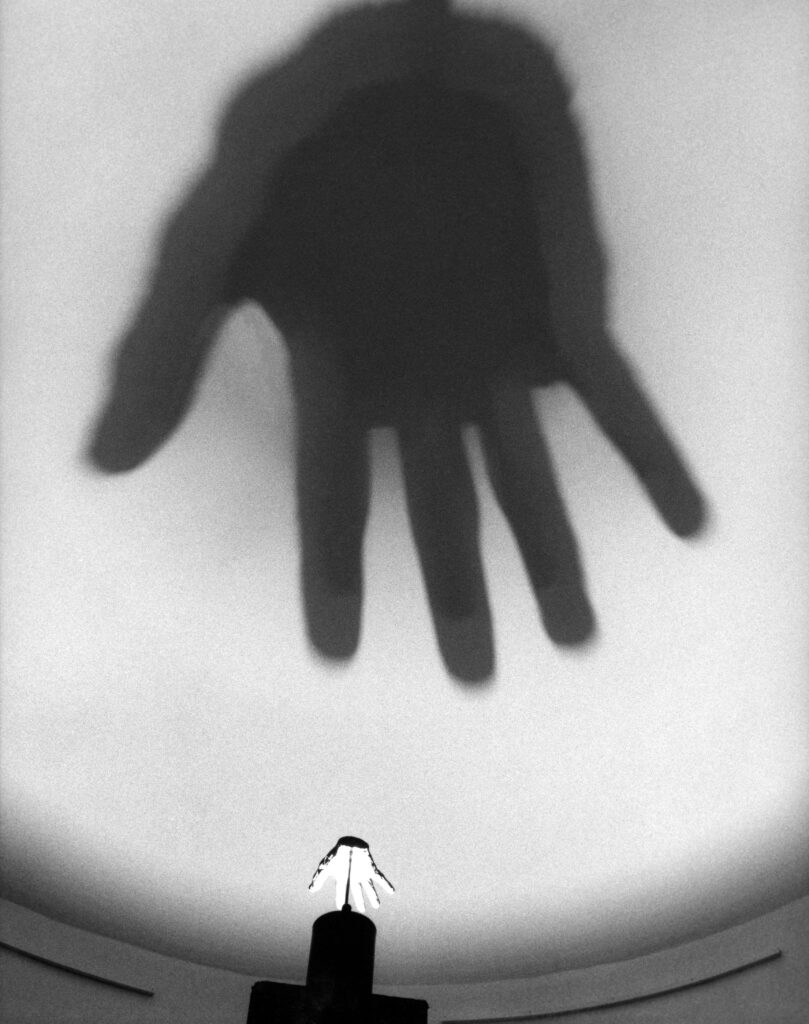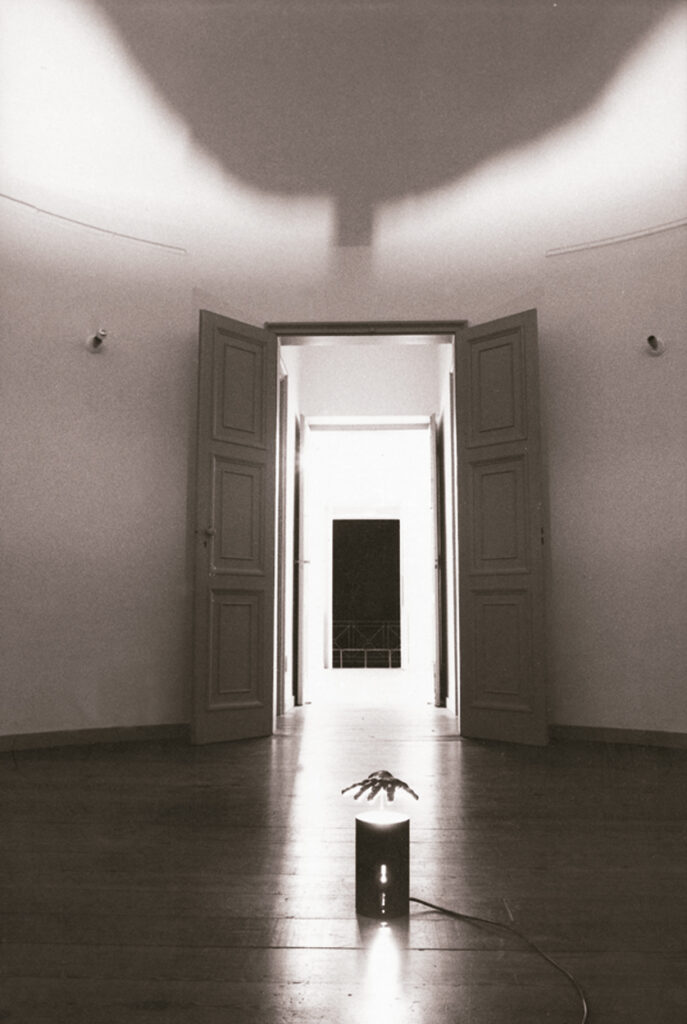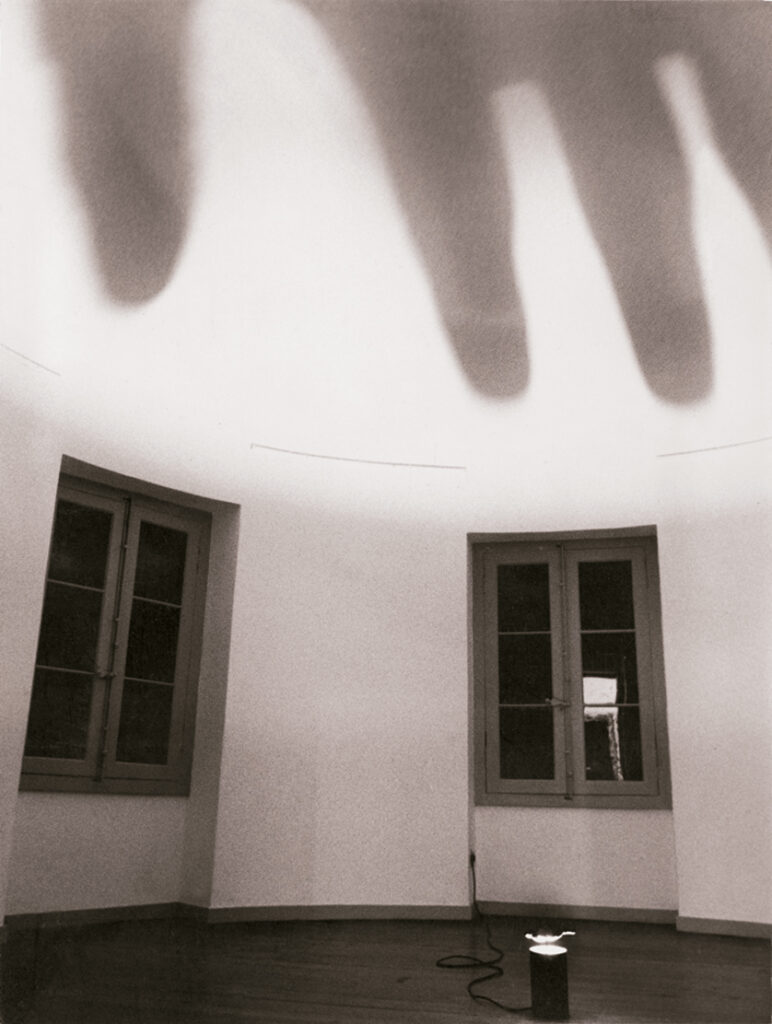
Hand

Installation. Solar Grandjean de Montigny, Rio de Janeiro.
Marcos Chaves’ work, although it emerged in the 1980s, reveals concerns that differ from those of many of his peers of the same generation, who were committed to the revival of painting and, therefore, the revalorization of craft as a means of implementing procedures specific to this technique. Conversely, the artist’s production is part of experimentalism, where the idea plays a decisive role in the results of the work, and therefore does not favor any technique or support, which implies a relative devaluation of craftsmanship in relation to the Project, since the creation of the image does not necessarily depend on manual intervention.
The installation shown here is an example of this. Taking advantage of the particularities of the circular room on the second floor of the Solar Grandjean de Montigny, Marcos Chaves created a proposal that discusses precisely the specificity of his work. In the center of the floor, there is a small metal cylinder, from which a spotlight comes out, projecting the shadow of a copy of the artist’s hand onto the dome of the darkened room. The image of the shadow of the hand takes us back not only to the beginnings of painting, when prehistoric men left the marks of their hands on the walls of caves through body painting, but also to Plato’s allegory of the Cave.
This double reference gives meaning to the installation and to his own work, establishing a difference and an analogy. Between the imprint of the cave hand, a fundamental indicator of manuality in the constitution of the human species, and the hand projected by the alien light on the ceiling of the room, there is the lapse of the entire history of art. The shadow hand, however, can be linked to the dawn of rational thought, so clearly explained by Platonism. This is an appearance – the shadow – of the appearance – the polyester resin hand – three degrees removed from the artist’s hand, the real one, which intervenes not in its technical-artisanal dimension, but as an icon of an idea. A hand that thinks and elaborates a project to be executed by another, distancing it from the tradition of art understood as mimetic tekné and bringing it closer to experiences that seek to resolve the image from a contemporary point of view.
Fernando Cocchiarale, 1989


